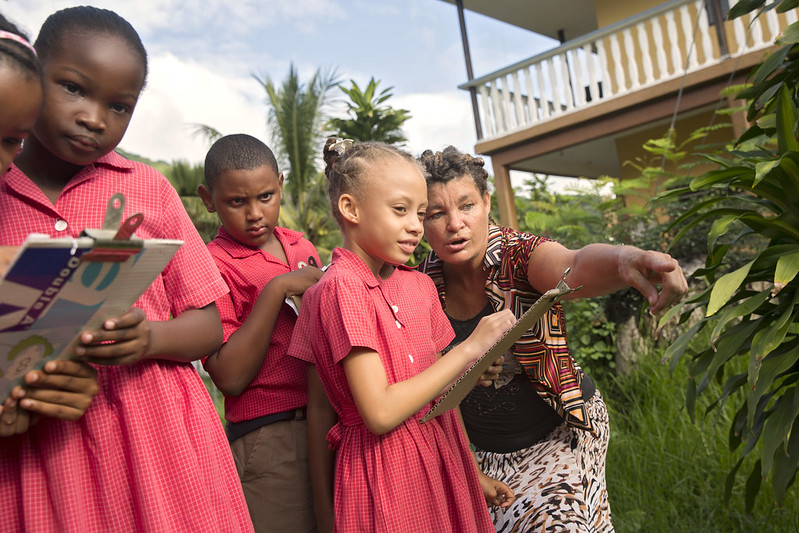Seychelles leads the way with first ‘blue bond’ to finance adaptation
Blue bonds could soon be funding a range of climate adaptations, such as restoring mangrove forests, which not only capture carbon from the atmosphere, but also help to protect low-lying coastal areas from rising tides.
� ��The Blue Economy is the next frontier of Seychelles development,” says President Danny Faure in a newly published Forbes Africa special report on the Indian Ocean island state. But what is the Blue Economy and why is the Seychelles leading the way?
In 2018, the Seychelles – an archipelago of 115 islands off the coast of East Africa – became the first country to issue a “blue bond”. Orchestrated by the World Bank, it raised USD 15 million “to finance marine and ocean-based projects that have positive environmental, economic and climate benefits”.
Blue bonds
Blue bonds – and the Blue Economy they help to finance – are generating excitement as a way to fund climate change adaptation. Tourism and fishing are the main industries in the Seychelles, and both are threatened by the impacts of climate change on ocean health: dwindling fish stocks threaten food security, while coral bleaching undermines the appeal to tourists.
A healthy marine environment makes both economic and environmental sense, but transitioning to sustainable fisheries can incur substantial short-term costs. The blue bond is financing a mixture of grants and investments to help the Seychelles through the transition.
The grants, accounting for USD 3 million of the bond, are being managed by the Seychelles Conservation and Climate Adaptation Trust, an independent public-private entity. The Development Bank of Seychelles is in charge of the investments.
Three investors – Calvert Impact Capital, Nuveen, and Prudential Financial – each put in USD 5 million. Their risk is mitigated by the bond being partially guaranteed by the World Bank and subsidized by the Global Environment Facility. Euromoney columnist Kanika Saigal argues that this constitutes a “pretty good deal” all round: “Firstly, the Seychelles accesses debt at a discount. Secondly, the institutions and investors involved in the deal have bragging rights for working on the first ever blue bond… And lastly, its successful roll-out provides a blueprint for other island nations to raise debt in a similar fashion.”
Blue carbon
The project complements an earlier innovation, described as the “first ever climate adaptation debt restructuring that also includes a strong marine conservation component”. The Nature Conservancy, an NGO, worked with the Seychelles and creditor governments to restructure its sovereign debt.
Essentially, the countries to which the Seychelles owed money agreed to write off some of that debt in return for credible commitments to better management of ocean resources.
Vincent Meriton, the Vice President of the Seychelles, calls the blue bond “one of the world’s most innovative financial instruments in recent years”. Launching it, World Bank Vice-President Arunma Oteh said: “We hope that this bond will pave the way for others — much like the World Bank’s first green bond catalysed the green bond market 10 years ago.”

Children learning about mangroves in the Seychelles. Photo by UN Women/Flickr
Further initiatives have followed. The Nordic Investment Bank has issued a “Baltic Blue Bond” to fund restoration of marine ecosystems in the Baltic. Last month, the World Bank and Credit Suisse launched USD 28.6m worth of blue bonds to support projects in areas such as sustainable aquaculture, marine protected areas and reducing ocean pollution.
As the science behind “blue carbon” matures, blue bonds could increasingly fund initiatives such as restoring mangrove forests, which can not only capture carbon from the atmosphere but also help to protect low-lying coastal areas from rising tides. The Nature Conservancy has set out ambitions to raise USD 1.6 billion in blue bonds for up to 20 countries, protecting 1.5 million square miles of ocean.
Blue bonds still have a long way to go to match the popularity of green bonds: in the decade since the World Bank catalysed that market, over half a trillion dollars’ worth were issued.
Golden age?
Some commentators see in green bonds a cautionary note for blue bonds. Writing on the IMF website, Afsaneh Beschloss and Mina Mashayekhi argue that a “major challenge, which will continue to bedevil all forms of sustainable finance, has been to ensure that the environmental impact of green bond projects is transparent, verifiable, measurable, and compliant with international standards.” Still, there is clear potential. Beschloss and Mashayekhi observe: “Sustainable finance may be experiencing a golden age of innovation”.
As Jenn Pryce, CEO of Calvert Impact Capital, put it when explaining why she chose to invest in the Seychelles blue bond: “The oceans finance market is quite nascent, but the need for capital to address threats to the health of our oceans is increasingly urgent. The blue bond sets a great example of the type of bold leadership from governments and financing from public and private sectors that we need more of”. Where the Seychelles has led the way, more new ideas seem likely to follow.
The ideas presented in this article aim to inspire adaptation action – they are the views of the author and do not necessarily reflect those of the Global Center on Adaptation.